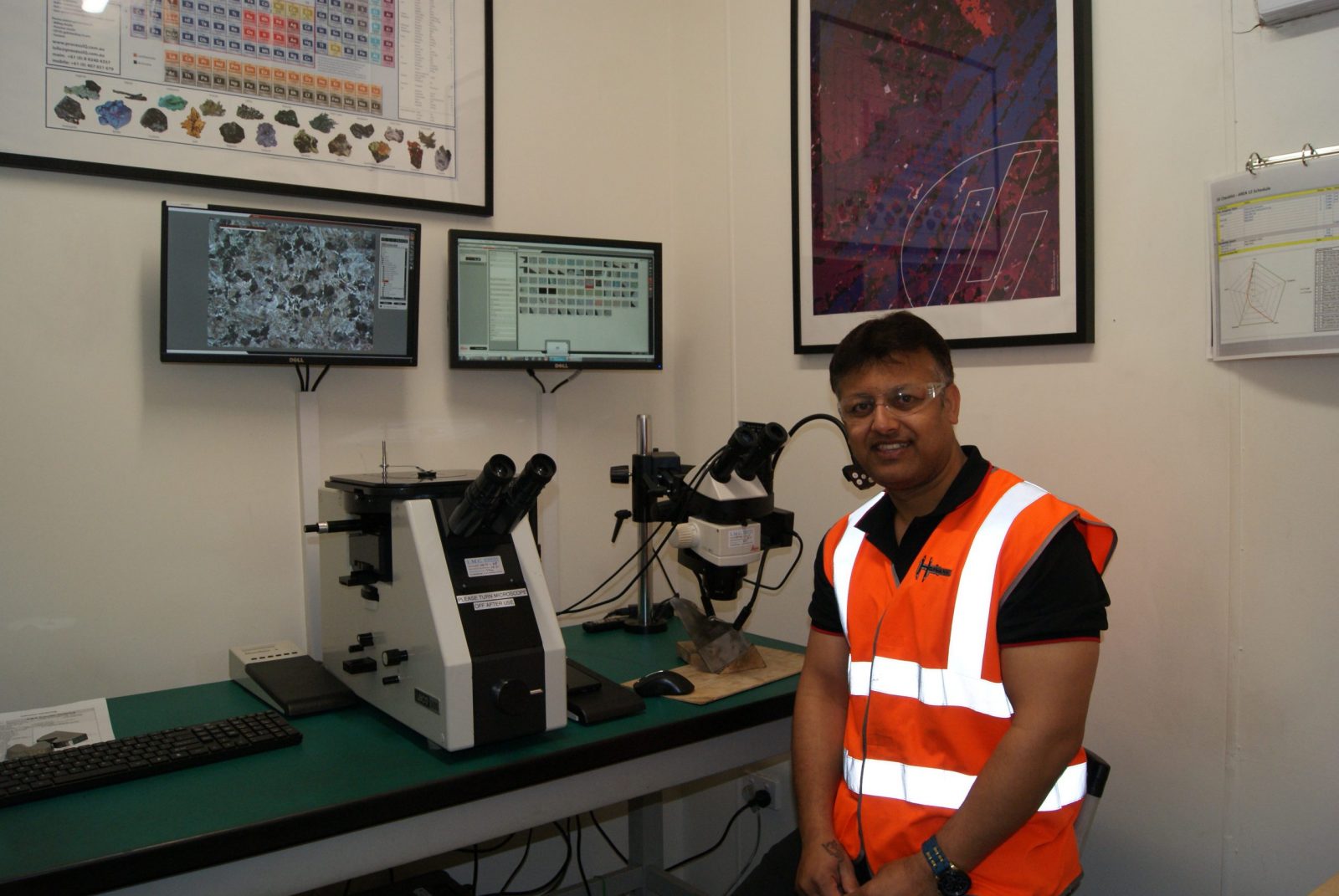Mr. Mrinal Nandi
Hofmann Engineering in Australia
 Back in 2018 we ran across a very interesting fellow by the name of Mrinal Nandi who at the time was a metallurgist in India who was looking for a change. Fast forward and today Mrinal is a metallurgist in Australia who is going to tell us a bit about the heat treatment industry in Australia amongst other things.
Back in 2018 we ran across a very interesting fellow by the name of Mrinal Nandi who at the time was a metallurgist in India who was looking for a change. Fast forward and today Mrinal is a metallurgist in Australia who is going to tell us a bit about the heat treatment industry in Australia amongst other things.
Mrinal I just gave a very brief summary about your career, perhaps you could tell us how you got into the industry and how you ended up moving from India to Australia.
First of all, I would like to thank TheMonty.com for this opportunity to share my background, work  experience and present my employer, Hofmann Engineering, on this prestigious platform. I completed my engineering degree at one of the oldest Engineering Colleges in Gujarat, India. From there, I obtained a campus placement as Trainee with FAG Bearing India Ltd (Schaeffler Group) for 1 year before a permanent placement in the heat treatment department, where I remained for the next 5 years.
experience and present my employer, Hofmann Engineering, on this prestigious platform. I completed my engineering degree at one of the oldest Engineering Colleges in Gujarat, India. From there, I obtained a campus placement as Trainee with FAG Bearing India Ltd (Schaeffler Group) for 1 year before a permanent placement in the heat treatment department, where I remained for the next 5 years.
One of my professional passions is the automotive sector and I aspired to work in this fast paced, highly competitive industry. That opportunity came with Mahindra Automotive, one of the most reputable organizations in India that manufactures products for the global automotive market. Before moving to Australia I was working with Auto Auxiliary Giant Bosch India Ltd (Bosch Group) as department head- Heat Treatment for 5 years. In 2018, I received and offer I simply could not refuse and moved to Australia under an employer sponsorship program as skills and experience are in high demand for my field.
A few years back I spent some time in Australia for a mixture of business and pleasure. One of the companies I had planned on visiting was your current employer Hofman Engineering, however due to the vastness of the country this did not come to pass. Please share with us some information about Hofman, particularly as it relates to heat treating.
Since 1969 Hofmann Engineering has provided specialist engineering services to Australia’s industry leaders. Quality Assurance accreditation by Lloyds (LRQA) complements total quality culture. Hofmann Engineering is committed to continuous quality improvement which touches every aspect of products, services, and customer support. Hofmann Engineering staff and management alike pursue a single goal – a total focus on quality in every aspect of manufacture, customer service and on time delivery. We believe in continuous improvement and always working at being the engineering and technological leader in our industries. Our individual skills and experience are what underlies our reputation as a totally self-contained engineering company with all resources “under one roof”.
How about processes offered? Do you see any limitations on what is available in Australia?
Hofmann Engineering owns four large factories in Australia as well as factories in North and South America. In Perth, the company headquarters, the company has a large heat treatment operation: Our largest is a carburising furnace with working chamber of 1.9m diameter and 4.8m deep from Aichelin. Other carburising and nitro carburising furnaces are 0.9m diameter x 1.8m deep, 0.6m diameter x 0.8m deep and 2 off 0.3m diameter x 0.6m deep in the form of fluid bed furnaces by quality heat treatment.
The Perth facility also made significant investment into induction hardening with a complete ABB robotic induction hardening cell, 1 off EMA tooth by tooth gear hardener, 1 off large capacity Radyne pin hardener and 2 off variable frequency induction hardeners. We also have a large portable induction hardening unit for re- hardening rope drums in situ. Finally in the heat treatment area we have an assortment of quench and temper, cryogenic, salt bath, draw furnace, blackening and shot blast.
In the fabrication area we have extremely large PWHT and stress-relieve furnaces in the form of a top hat 4.6m diameter x 2m high and a box furnace 14m x 14m x 4m high. Our eastern state factories in Bendigo and Newcastle have specialist PWHT for railway bogies on a large scale among other smaller heat treatment capabilities. One limitation I can see is that manufacturing costs relatively high in Australia due to factors like power, labour and geographically long supply chains. Having said that, Hofmann Engineering competes globally with up to 50% of sales for export.

I believe the future of captive and commercial heat treating in Australia is bright. The reasons are that the current government is launching key policies in defence, resources, power, transport and other sectors as part of the post COVID recovery plan that will stimulate local, in-country manufacturing. It is a great time to realise the potential within Australian manufacturing. In fact Hofmann Engineering will invest in heat treatment equipment in the coming years and upgrade exiting processing units with SCADA monitoring and automated controls.
How about differences in heat treatment processes in India and Australia? I have always thought heat treating is heat treating no matter where you go but you have far more firsthand knowledge than I.
Heat treatment scope in India is vast due to the automotive, agriculture and textile industries. The automotive industry plays a pivotal role in driving the heat treatment market in the country. Various parts and components of an automobile undergo a variety of heat treatment processes, hence, the heat treatment sectors has been fueled by the significant growth in automotive industry.
Secondly, favorable government policies such as Make in India, StartUp India, Foreign Direct Investment (FDI), and Goods and Services Tax have attracted significant investments from large overseas multi-nationals adding to the demand for heat treatment.
Australian heat treatment industry is far smaller than India’s and a direct comparison between the two countries is difficult. None the less, you are correct in saying that the principles of heat treatment are the same regardless of country and, from my perspective, the only significant differences are in the size and volume of parts processed. This obviously impacts on the equipment and process choice that companies in the two countries must invest in to be competitive.
Seeing as how it is a fairly small market do these pose problems when it comes to equipment suppliers, spare parts or service?
You are correct; we have very limited resources for equipment supply, spare parts and service, and the fact that Perth is the most isolated city in world we have long supply chains to deal with as well. This has driven Hofmann Engineering to become self-reliant in many respects with the ability to perform servicing and upgrades in-house.
This leads to another question, who in Australia does service and support heat treating?
Most of our essential consumables come from NSW and Victoria. Regarding service we have 1 or 2 specialist companies in Western Australia who provide local spares and services for heat treatment furnaces.
On a final note do you expect to see any substantial changes going forward?
As mentioned above, if the government can stimulate manufacturing and allow Australia to realise its’ full manufacturing potential then there are substantial opportunities on the horizon. On a lighter note, there is a great sporting rivalry between India and Australia on the cricket field. I do not see much change there as India will remain the most loved, most supported team in the world!
Did you like this article? Click here to subscribe to The Monty.

